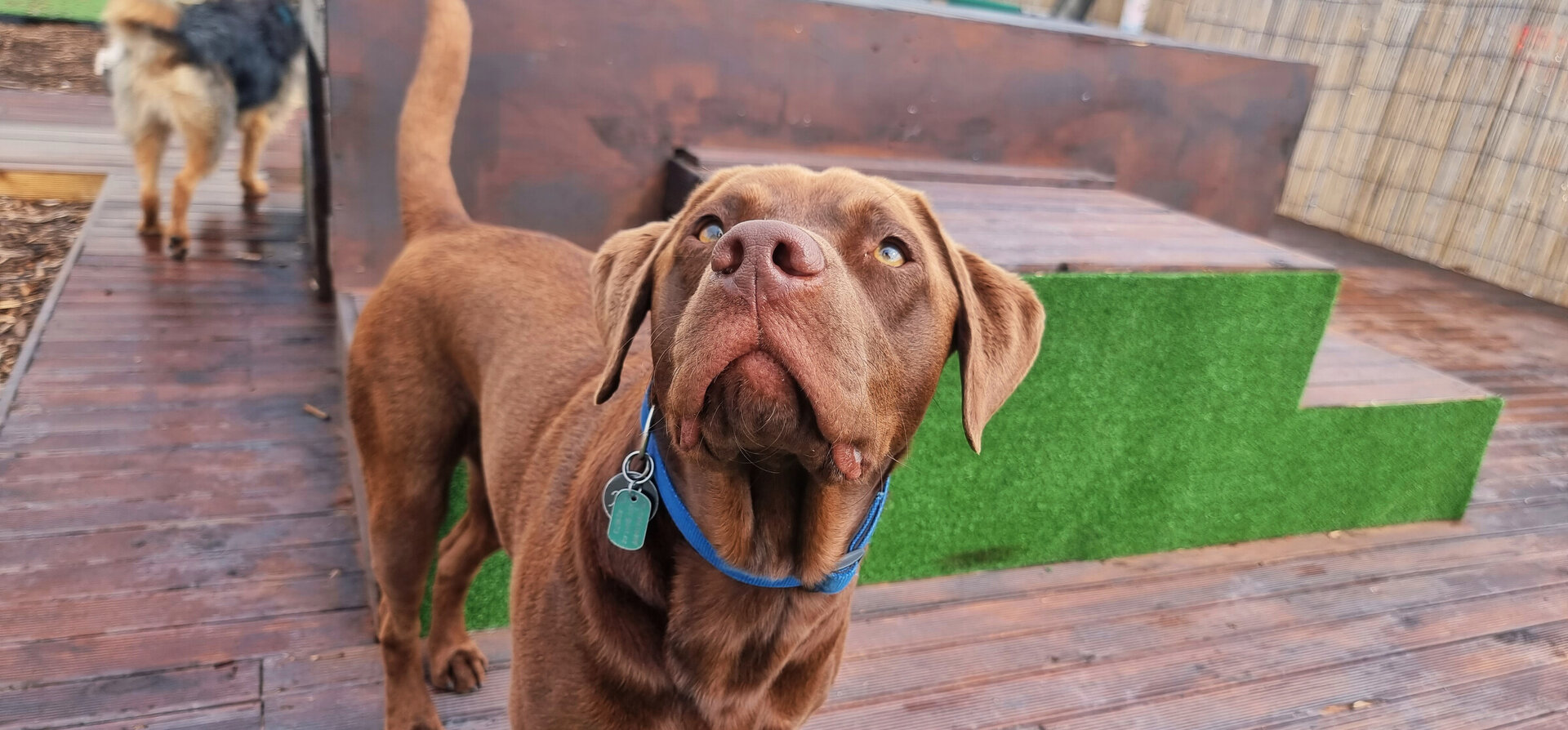The algae typically presents in rivers as dark brown or black mats, with a slimy or velvety texture and a musty smell. These mats can detach and cause rafts in the water. In lakes, it is often suspended in the water. The algae can make water look cloudy, discoloured, or like it has small globules in it.
Animals can get very sick if they ingest the potentially toxic algae. Unfortunately, dogs love the musty smell of potentially toxic algae and are naturally drawn to investigating it – usually by licking or ingesting the material. It can be quick acting and fatal to dogs.
“This is the time of year when we do start to see toxic algae appearing in our waterways. It is something people should be aware of if they are walking their dogs by rivers, streams, ponds and lakes or engaging in activities, such as kayaking, where they might come into contact with algae in the water,’’.
“As we head into the summer and warmer weather, it is likely that we’ll find more toxic algae, so people need to keep an eye out and avoid contact with any water that may have potentially toxic algae in it.’’
CYANOBACTERIA POISONING SYMPTOMS
Symptoms of cyanobacteria toxin poisoning in animals include lethargy, muscle tremors, fast breathing, twitching, paralysis, and convulsions. If you suspect your dog is suffering from cyanobacteria poisoning, contact your vet immediately.
For humans, if you have been in contact with water containing cyanobacteria, you may experience tingling or numbness around the fingertips and/or mouth, breathing difficulty, gastrointestinal symptoms, or skin rashes. If you feel any of these symptoms after contact with a waterbody, seek medical advice from your doctor or contact Healthline on 0800 611 116.
WHAT ARE CYANOBACTERIA?
Cyanobacteria (or blue-green algae) are microscopic organisms that play a very important role in many land and aquatic ecosystems. Cyanobacteria are naturally occurring and live in a range of waterways, from near-pristine to those more impacted by land-use. Technically speaking cyanobacteria are bacteria (prokaryotes), not algae (which are eukaryotes), but they perform the same ecological function of converting sunlight into energy and oxygen (via photosynthesis). Hence they are often grouped with algae. Some cyanobacteria can produce toxins (commonly known as potentially toxic algae) that are harmful to animals and humans. In aquatic environments, cyanobacteria can multiply and form blooms, which can be suspended in water (planktonic) or attached to rocks (benthic). In lakes and slow-flowing waters, cyanobacteria grow in a free-floating (also called planktonic) form which can cause the water to become murky or cloudy. Planktonic cyanobacterial blooms are generally bright green in colour and can give lakes a ‘pea soup’ appearance. They can also form visible green to red films or scums on the water’s surface, especially at the water’s edge.
WHAT DOES POTENTIALLY TOXIC ALGAE LOOK LIKE IN RIVERS?
In rivers (and occasionally lakes), potentially toxic algae generally form brown or black mats that grow on rocks in the river bed (also called benthic). Mats that come loose from the riverbed can wash up on the banks or form floating ‘rafts’ in shallow areas. When exposed, the mats may dry out and turn a light brown or white colour and may also produce a strong musty odour. Potentially toxic algae differs from harmless bright green algae, which often form long filaments.
WHAT DOES POTENTIALLY TOXIC ALGAE LOOK LIKE IN LAKES?
In lakes and slow-flowing waters, potentially toxic algae grow in a free-floating (also called planktonic) form which can cause the water to become murky or cloudy. Planktonic cyanobacterial blooms are generally green in colour and can give lakes a ‘pea soup’ appearance. They can also form visible green to red films or scums on the water’s surface, especially at the water’s edge.
WHAT IS THE IMPACT ON PETS AND ANIMALS?
Dogs are at the most risk as they like to play and scavenge in the water. Dog deaths associated with potentially toxic algae in rivers have become increasingly common around New Zealand. In most instances these deaths have been associated with dogs eating a mat forming cyanobacteria (sometimes also known as Phormidium). The mats produce a deep earthly odour that dogs seem to be attracted to. The risk to dogs is greatest when the mats become detached from the river bed and collect at the river edge where they are easily accessible.
If you suspect that your dog has eaten toxic algae, you should treat it like an emergency and contact your vet immediately. In extreme cases, death can occur within 30 minutes after the first signs of illness appear. Signs a dog has been poisoned by toxic algae include lethargy, muscle tremors, fast breathing, twitching, paralysis and convulsions.
Stock can wander into waterways with toxic algae and drink it, so you will need to arrange an alternative water source for them and keep them out of waterways.
HOW TO KEEP YOU (AND YOUR PETS) SAFE
The best thing you can do is stay informed. Look for the latest toxic algae monitoring results, check for any warnings or alerts, and get to know what it looks like before you head to the river or lake. In some conditions potentially toxic algae can rapidly bloom, so learn what to look for, particularly during hot periods of the year.
If potentially toxic algae are present, or you think you have spotted it, then keep out of the water and avoid drinking or touching it. If you do swim in water that is contaminated with toxic algae, rinse off with fresh water as soon as possible. Wearing a wetsuit will not protect you.
Keep your dog on a lead, out of the water and most importantly, ensure your dog does not touch, lick or eat any algae mats in the water or at the water’s edge, or drink water from the affected areas. If your dog has been in the water, do not let them lick their fur, and give them a wash with fresh water.
Source: LAWA







